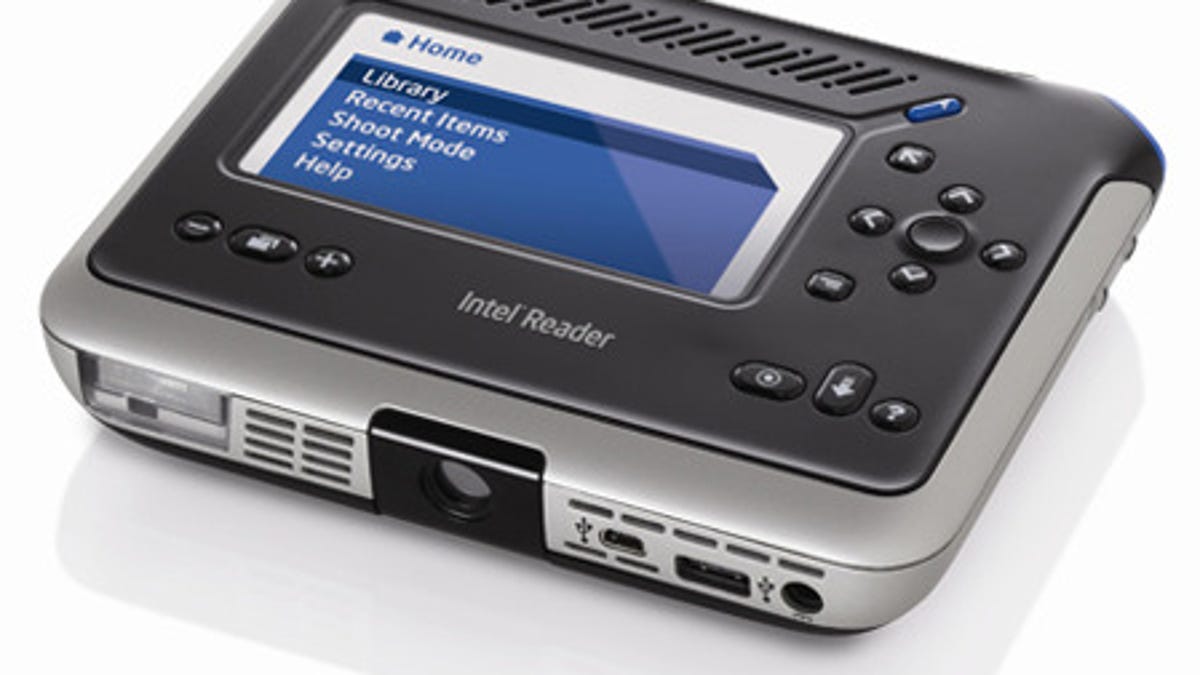Intel debuts text reader for the blind
The Intel Reader is a new mobile device designed to read printed text aloud for the blind or those who have a difficult time seeing or reading.

Intel is doing its part to help people with sight or reading disabilities enjoy the written word.
The company announced on Tuesday the debut of the Intel Reader, a handheld text-to-speech device that can read any printed text aloud to those who are blind or have difficulties seeing or reading.
The Atom-powered device uses a high-resolution camera to capture images of any printed text, which it then converts into digital format to read out loud. The Reader can be used as a standalone device to snap pictures of text. But paired with Intel's Portable Capture Station, which can hold the Reader in place, the device can grab huge amounts of text, such as an entire book, according to Intel.
"We are proud to offer the Intel Reader as a tool for people who have trouble reading standard print so they can more easily access the information many of us take for granted every day, such as reading a job offer letter or even the menu at a restaurant," said Louis Burns, vice president and general manager of Intel's Digital Health Group, in a statement.
A check at some of the retailers selling the Intel Reader revealed its base price to be $1,499, with the Portable Capture Station an additional $399.
Weighing one pound, the Reader is the size of a paperback book. The tactile buttons and voice-operated menus that control the device have been designed so sightless people can use it, Intel said. Individuals with poor vision can also zoom in or out of the display and increase the font size of its text.
The 5-megapixel, autofocus camera can snap a picture of text anywhere from 4 inches to 1.1 yards. The content itself is stored on a 4GB solid-state drive, which Intel says can hold up to 600 processed pages (images and text) or 500,000 text-only pages.
Users of the device can create MP3 versions of printed text to be played on computers and music players. Certain audio books can also be loaded from computers directly onto the Reader.
The idea for the Reader sprang from Ben Foss, an Intel researcher who learned in elementary school that he suffered from dyslexia. As an adult, he continued to face challenges reading, unable to find many of his favorite books and journals in audio format.
"As someone who is part of this dyslexic community, I am thrilled to be able to help level the playing field for people who, like me, do not have easy access to the printed word," said Foss in a statement. "The Intel Reader is a tool that can help give people with dyslexia, low-vision, blindness, or other reading-based disabilities access to the resources they need to participate and be successful in school, work and life."
Intel said that the Reader has been endorsed by the International Dyslexia Association as an important advance in assistive technology. The company is working with organizations such as Lighthouse International, the National Center for Learning Disabilities, and the National Federation of the Blind to reach out to people who have trouble reading printed text.
The device will be available in the U.S. through select resellers, including CTL, Don Johnston Incorporated, GTSI, Howard Technology Solutions, and HumanWare.
Like other tech companies, Intel has ventured into the health care market with new products and services. In 2007, the company launched the Motion C5, a device to help hospitals better monitor and measure patient data. Earlier this year, Intel and GE announced a new alliance to develop health care technologies for seniors.

